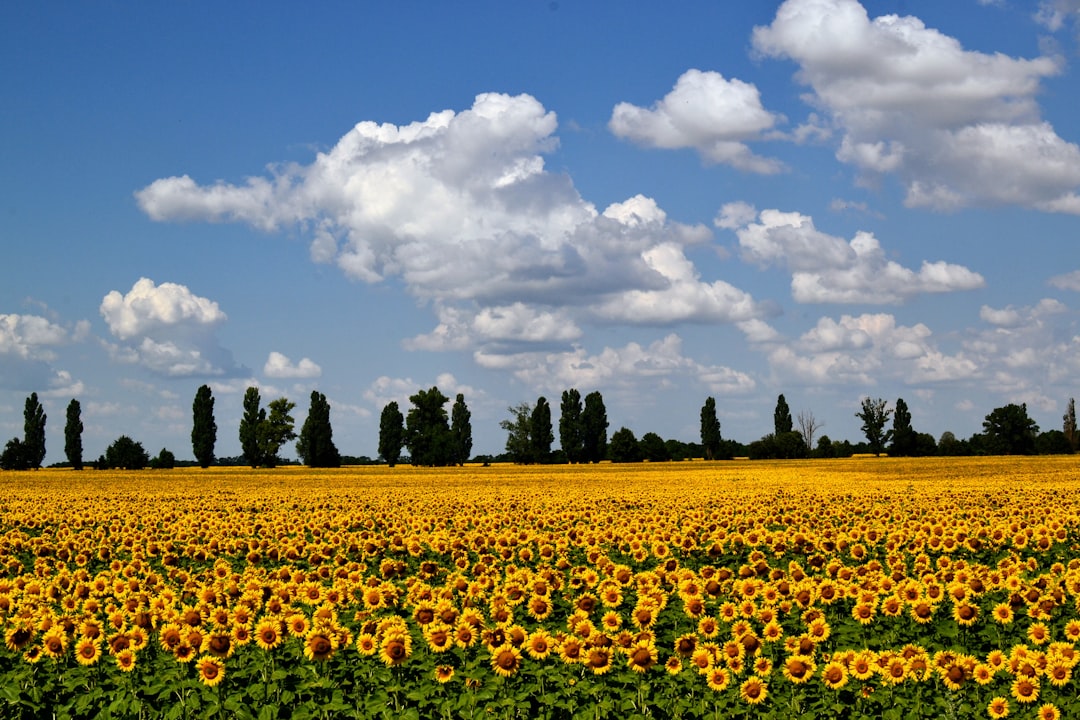Harvesting Sunflower Seeds: A Step-by-Step Guide

Sunflower seeds have a long history and have been used for various purposes throughout the years. They are believed to have originated in North America and were cultivated by Native Americans for their oil and nutritional value. Sunflower seeds were later introduced to Europe by Spanish explorers in the 16th century. Today, sunflower seeds are widely consumed and enjoyed for their delicious taste and numerous health benefits.
Sunflower seeds are packed with essential nutrients, making them a healthy addition to any diet. They are an excellent source of protein, fiber, healthy fats, vitamins, and minerals. They are particularly rich in vitamin E, which is a powerful antioxidant that helps protect the body against free radicals. Sunflower seeds also contain magnesium, which is important for bone health, and selenium, which supports a healthy immune system.
Key Takeaways
- Sunflower seeds are a nutritious and versatile food source.
- Choosing the right sunflower variety is important for optimal seed harvesting.
- Proper soil preparation is crucial for successful sunflower growth.
- Planting sunflower seeds at the right time and depth can increase yield.
- Caring for sunflowers during the growing season includes watering, fertilizing, and pest control.
Choosing the Right Sunflower Varieties for Seed Harvesting
When it comes to choosing sunflower varieties for seed harvesting, there are several factors to consider. First, you need to decide whether you want to grow traditional sunflowers or hybrid varieties. Traditional sunflowers produce seeds that are larger and easier to harvest, while hybrid varieties may have smaller seeds but offer other desirable traits such as disease resistance or different colors.
Another factor to consider is the maturity time of the sunflower variety. Some varieties mature faster than others, which can be advantageous if you live in a region with a shorter growing season. Additionally, you may want to consider the height of the sunflower plants. Taller varieties may require staking or support to prevent them from falling over.
Preparing the Soil for Sunflower Growth
Sunflowers thrive in well-drained soil that is rich in organic matter. Before planting sunflower seeds, it is important to prepare the soil properly. Start by removing any weeds or grass from the area where you plan to plant the sunflowers. Loosen the soil with a garden fork or tiller to a depth of about 12 inches. This will help improve drainage and allow the sunflower roots to penetrate the soil more easily.
Next, amend the soil with compost or well-rotted manure to improve its fertility. Spread a layer of organic matter over the soil and mix it in thoroughly. This will provide the sunflowers with the nutrients they need to grow and produce healthy seeds. Finally, level the soil and remove any large clumps or rocks that could interfere with seed germination.
Planting Sunflower Seeds for Optimal Yield
| Planting Method | Yield (per acre) | Germination Rate | Days to Maturity |
|---|---|---|---|
| Direct Seeding | 1,000-1,500 lbs | 70-80% | 80-100 days |
| Transplanting | 1,500-2,000 lbs | 90-95% | 70-90 days |
| Spacing | |||
| – Rows | |||
| – Plants | |||
| Fertilizer | |||
| – Nitrogen | |||
| – Phosphorus | |||
| – Potassium |
The best time to plant sunflower seeds is in late spring or early summer, after the danger of frost has passed and the soil has warmed up. Sunflowers are warm-season plants that require full sun to thrive, so choose a location that receives at least six hours of direct sunlight per day.
To plant sunflower seeds, dig small holes in the prepared soil, about 1 inch deep and 6 inches apart. Place one or two seeds in each hole and cover them with soil. Water the area thoroughly after planting to ensure good seed-to-soil contact.
Caring for Sunflowers During the Growing Season
Sunflowers require regular watering to keep their roots moist, especially during dry periods. Water deeply once or twice a week, providing enough water to penetrate the soil to a depth of at least 6 inches. Avoid overwatering, as this can lead to root rot and other problems.
Fertilizing sunflowers is also important for optimal growth and seed production. Apply a balanced fertilizer, such as a 10-10-10 or 14-14-14 formula, when the plants are about 6 inches tall. Follow the manufacturer’s instructions for application rates and frequency.
Pest and disease management is another aspect of caring for sunflowers during the growing season. Common pests that can affect sunflowers include aphids, caterpillars, and birds. Monitor your plants regularly and take appropriate measures to control pests if necessary. Diseases such as powdery mildew and downy mildew can also affect sunflowers. To prevent these diseases, avoid overhead watering and provide good air circulation around the plants.
Signs of Sunflower Seed Maturity

Knowing when sunflower seeds are ready for harvest is crucial to ensure optimal flavor and nutritional value. The first sign of seed maturity is when the back of the sunflower head turns from green to yellow or brown. This indicates that the seeds are fully developed and ready for harvest.
Another way to determine seed maturity is by gently pressing on the back of the sunflower head with your thumb. If the seeds feel firm and do not dent easily, they are likely mature. If they still feel soft or squishy, they need more time to develop.
Harvesting Sunflower Seeds: Tools and Techniques
To harvest sunflower seeds, you will need a few basic tools. A pair of sharp garden shears or pruners will be useful for cutting the sunflower heads from the stalks. You will also need a clean, dry container to collect the harvested seeds.
To harvest sunflower seeds, wait until the back of the sunflower head has turned yellow or brown and the seeds feel firm. Cut the sunflower head from the stalk, leaving about 12 inches of stem attached. Place the harvested sunflower heads in a clean, dry container.
Drying and Storing Sunflower Seeds
After harvesting, it is important to dry sunflower seeds properly before storing them. This will help prevent mold or rot from developing and ensure that the seeds remain fresh and flavorful.
To dry sunflower seeds, spread them out in a single layer on a clean, dry surface such as a baking sheet or a wire rack. Place them in a warm, well-ventilated area out of direct sunlight. Stir or turn the seeds occasionally to promote even drying.
Once the sunflower seeds are completely dry, store them in an airtight container in a cool, dark place. Proper storage will help maintain the quality of the seeds and prevent them from becoming rancid.
Preparing Sunflower Seeds for Consumption
Sunflower seeds can be enjoyed in a variety of ways. They can be eaten raw, roasted, or used as an ingredient in various recipes. To prepare sunflower seeds for consumption, start by removing the shells if desired. This can be done by cracking the shells with a nutcracker or by using your fingers to pry them open.
If you prefer roasted sunflower seeds, spread them out in a single layer on a baking sheet and roast them in a preheated oven at 350°F for about 10-15 minutes, or until they are golden brown. You can also add flavorings such as salt, spices, or herbs before roasting for extra taste.
Benefits of Harvesting Sunflower Seeds and Using Them in Your Diet
Harvesting sunflower seeds and incorporating them into your diet can provide numerous health benefits. Sunflower seeds are an excellent source of protein, making them a great option for vegetarians and vegans. They also contain healthy fats, including monounsaturated and polyunsaturated fats, which can help reduce the risk of heart disease.
In addition to their nutritional value, sunflower seeds offer environmental benefits when grown for seed harvesting. Sunflowers are known for their ability to attract pollinators such as bees and butterflies, which helps support biodiversity in your garden. They also have deep roots that help improve soil structure and prevent erosion.
Sunflower seeds have a rich history and offer numerous benefits when grown and harvested at home. They are not only delicious but also packed with essential nutrients that support overall health and well-being. By choosing the right sunflower varieties, preparing the soil properly, and providing the necessary care during the growing season, you can enjoy a bountiful harvest of sunflower seeds. Whether you eat them raw, roasted, or use them in recipes, sunflower seeds are a versatile and nutritious addition to any diet. So why not give it a try and start growing and harvesting sunflower seeds in your own backyard?
If you’re interested in learning how to get the seeds from a sunflower, you’ll definitely want to check out this informative article on Lawn World’s website. They provide step-by-step instructions and helpful tips on harvesting sunflower seeds. From selecting the right sunflower variety to drying and storing the seeds, this article covers it all. To access this valuable resource, simply click here. Happy seed harvesting!
FAQs
What are sunflower seeds?
Sunflower seeds are the edible fruit of the sunflower plant. They are commonly used as a snack or as an ingredient in various dishes.
Why would I want to get the seeds from a sunflower?
Getting the seeds from a sunflower allows you to harvest them for consumption or for planting in your garden.
When is the best time to harvest sunflower seeds?
The best time to harvest sunflower seeds is when the flower head has turned brown and the back of the head is yellowish brown.
How do I remove the seeds from a sunflower?
To remove the seeds from a sunflower, you can use your hands or a tool such as a fork or a comb. Gently rub or scrape the seeds from the flower head.
How do I prepare sunflower seeds for consumption?
To prepare sunflower seeds for consumption, you can roast them in the oven or on a stovetop. You can also eat them raw or add them to various dishes.
Are sunflower seeds healthy?
Yes, sunflower seeds are a healthy snack as they are high in protein, fiber, and healthy fats. They also contain various vitamins and minerals.



